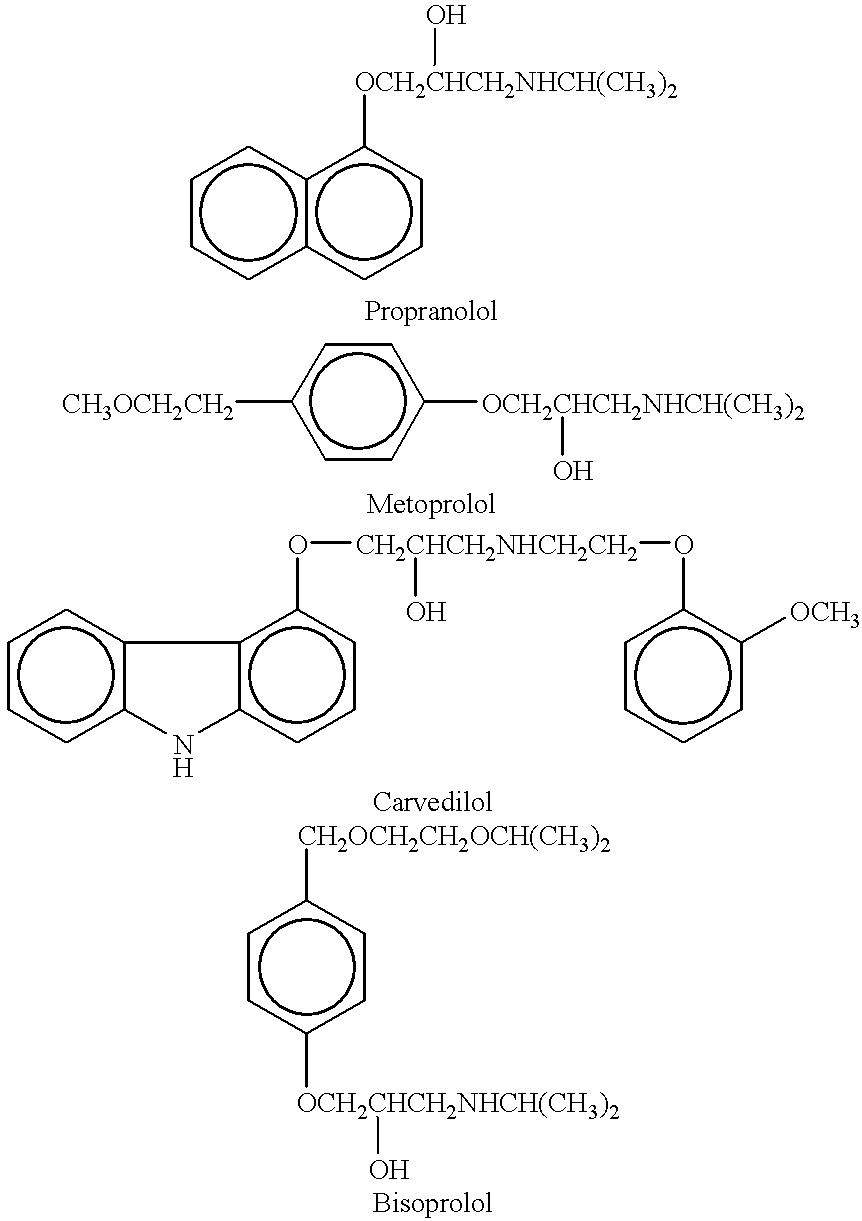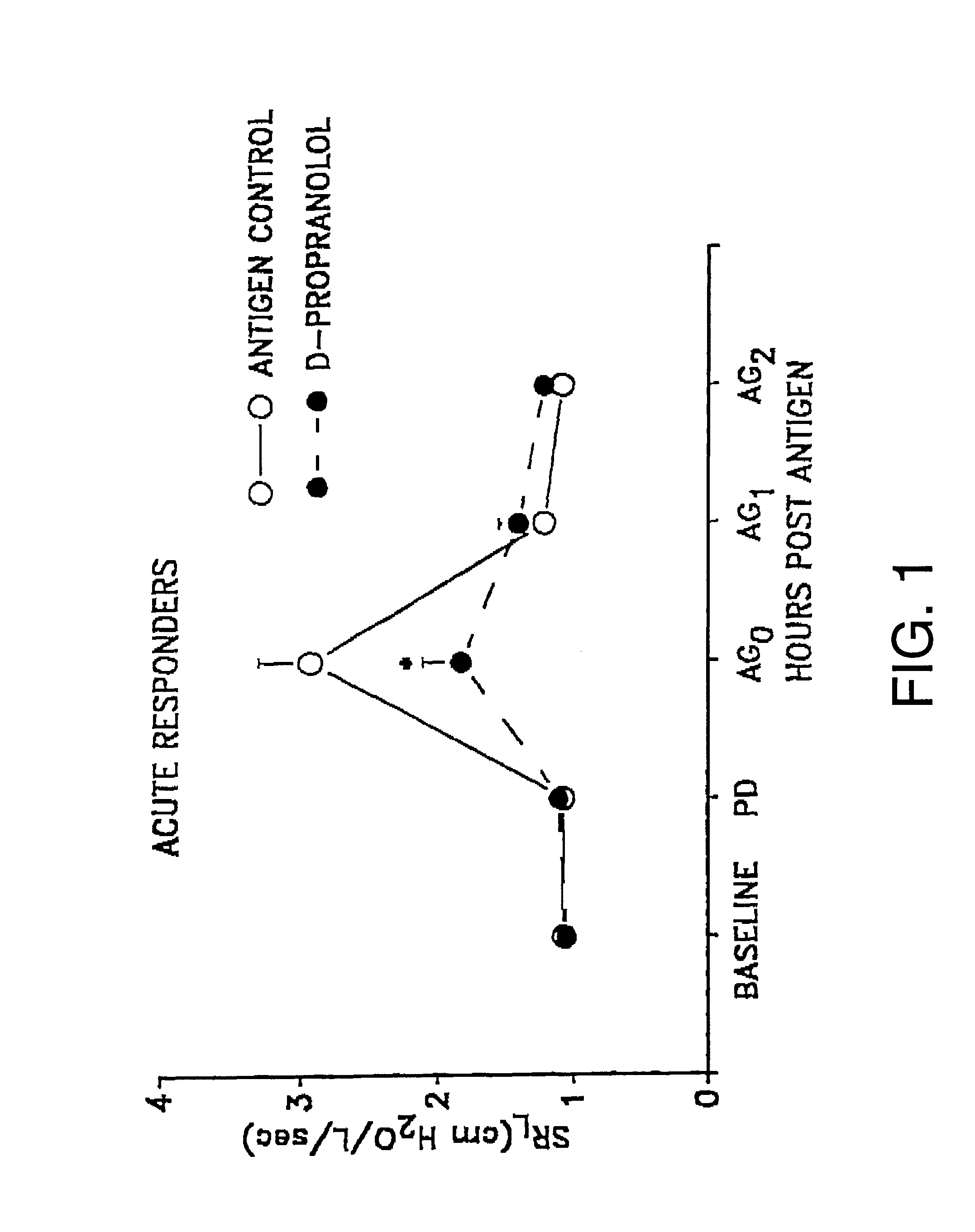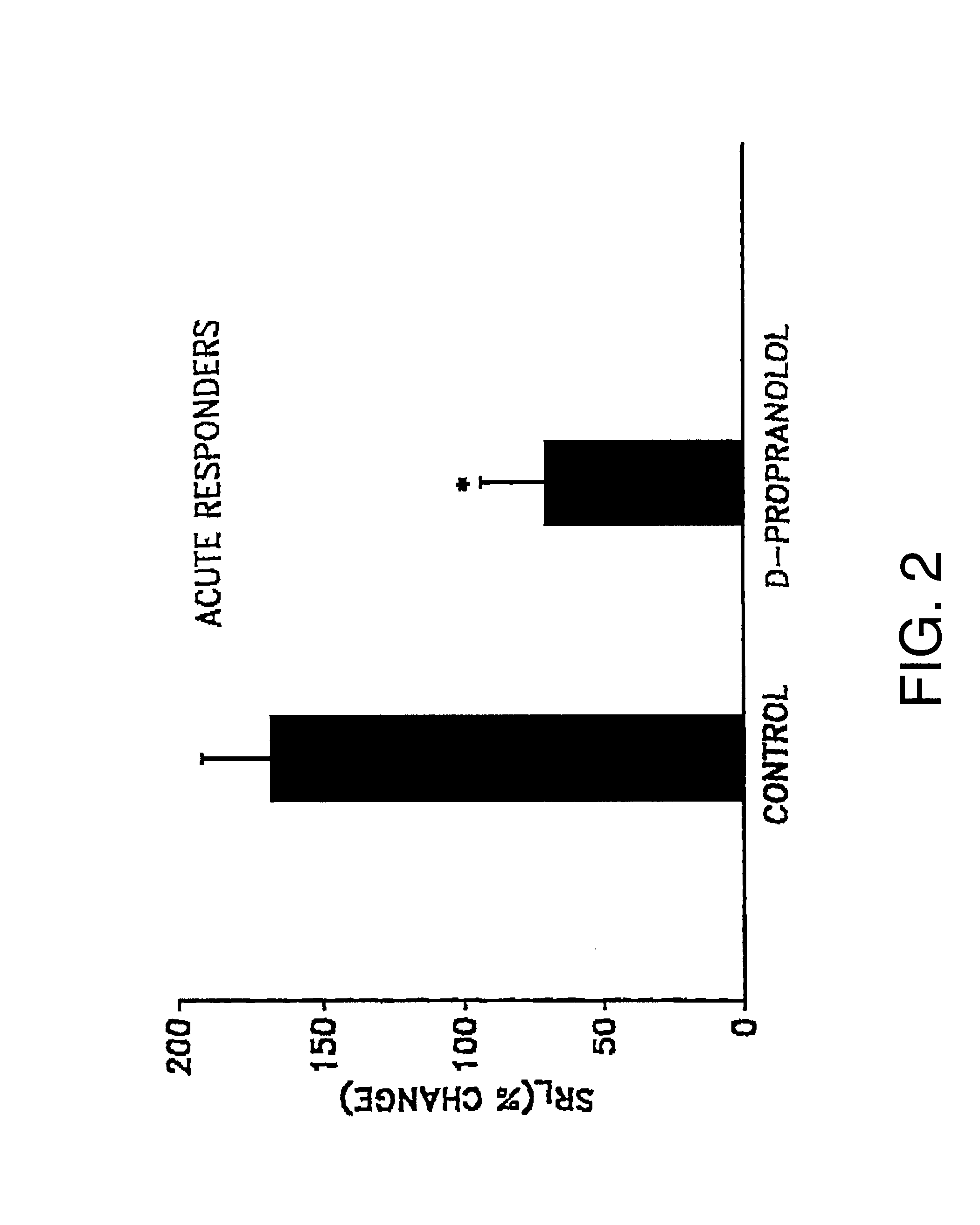Methods and compositions for treatment of asthma
a composition and asthma technology, applied in the field of asthma treatment, can solve the problems of asthma reaction, irritation, inflammation and edema, horse racing industry affected by horses, etc., and achieve the effects of inhibiting asthma, preventing asthma and related pathologies, and being easy to administer
- Summary
- Abstract
- Description
- Claims
- Application Information
AI Technical Summary
Benefits of technology
Problems solved by technology
Method used
Image
Examples
example ii
The comparative effects of L- and D-propranolol on antigen-induced bronchorestriction (ABR) and airway hyperresponsiveness (AHR) in sheep were tested. The sheep were treated as described in Example I. Propranolol, a nonselective beta-receptor antagonist is known to cause bronchorestrictions and worsen AHR.
Specific lung resistance (SR.sub.L) was measured in 11 allergic sheep, of which six sheep were acute responders and five sheep were dual responders, before and serially after challenge with Ascaris suum antigen, without and after pretreatment with D- or L-propranolol. The propranolol was administered either in an inhaled dose or an oral dose.
The following experiments used inhaled D- or L-propranolol. AHR was estimated at 2 hours (acute) or 24 hours (dual) after antigen challenge as the provocating dose of carbachol which increased SR.sub.L by 400% (PD.sub.400). In acute responders, SR.sub.L increased by 219% with antigen challenge and PD.sub.400 decreased by 55%. Inhaled D-proprano...
PUM
| Property | Measurement | Unit |
|---|---|---|
| particle size | aaaaa | aaaaa |
| time | aaaaa | aaaaa |
| vascular permeability | aaaaa | aaaaa |
Abstract
Description
Claims
Application Information
 Login to View More
Login to View More - R&D
- Intellectual Property
- Life Sciences
- Materials
- Tech Scout
- Unparalleled Data Quality
- Higher Quality Content
- 60% Fewer Hallucinations
Browse by: Latest US Patents, China's latest patents, Technical Efficacy Thesaurus, Application Domain, Technology Topic, Popular Technical Reports.
© 2025 PatSnap. All rights reserved.Legal|Privacy policy|Modern Slavery Act Transparency Statement|Sitemap|About US| Contact US: help@patsnap.com



